Effective Deep Core Stability Exercises for Better Health
Did you know that deep core stability is the foundation of nearly every movement we perform, whether it’s a daily task like bending to tie your shoes or an intense workout session? Surprisingly, most people overlook the importance of a stable core, often focusing solely on visible abs while neglecting the deeper, crucial muscles that support our spine and overall body mechanics. This article will delve into the deep core stability exercises that can transform your fitness regimen and enhance your overall health.
We’ll begin by understanding what deep core stability really means and why it’s vital for everyone, regardless of fitness level. Then, we’ll address some common myths and misconceptions that often misguide fitness enthusiasts. We’ll also provide you with practical methods to assess your current core stability, so you know exactly where you stand. Following this, we’ll explore the key principles of effective deep core stability training, ensuring you get the most out of your workouts.
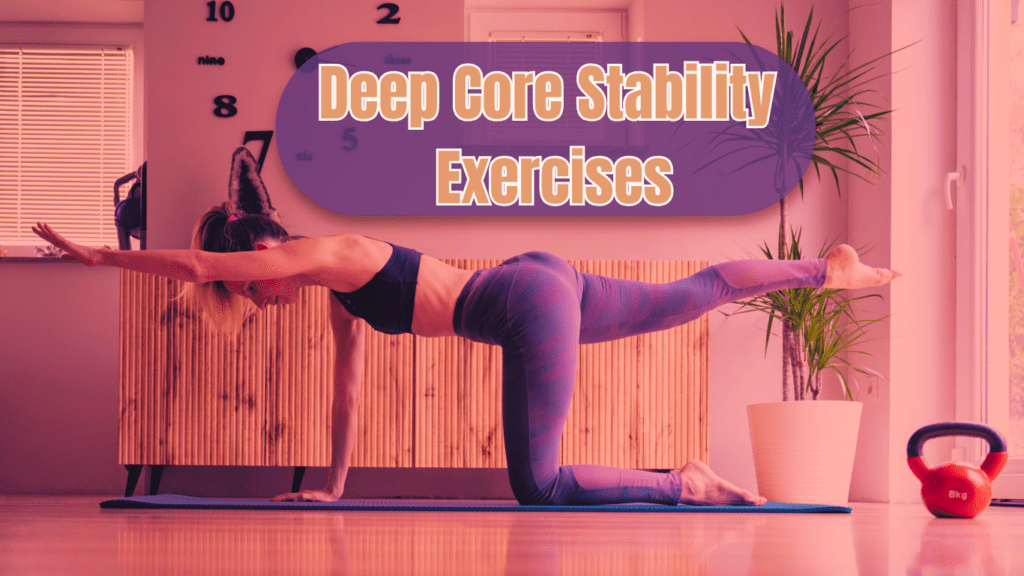
Deep core stability is not just about performing a series of exercises; it’s about integrating these practices into your daily life for lasting benefits. In this article, we’ll guide you through some top deep core stability exercises that are simple yet highly effective. By the end, you’ll also hear inspiring success stories and testimonials from individuals who have experienced significant improvements in their fitness and quality of life through dedicated core stability training.
So, why should you care about deep core stability? For starters, a stable core can prevent injuries, improve posture, enhance athletic performance, and even alleviate chronic pain. The muscles involved in core stability, such as the transverse abdominis, pelvic floor, and diaphragm, work together to provide a solid foundation for movement. When these muscles are strong and functioning correctly, they protect the spine and allow for better control and efficiency in all physical activities.
Many people believe that doing countless crunches or sit-ups will give them a strong core, but this is one of the biggest misconceptions in fitness. True deep core stability involves targeting the deeper muscles that lie beneath the superficial ones. These muscles require specific exercises that often focus on isometric holds, controlled movements, and proper breathing techniques. Understanding this distinction is key to developing a truly stable core.
Subscribe And Get Our Free E-Book:Unlocking The Power Of Nutrition-Supplements, Substitutes, and Superfoods!
To start assessing your core stability, you don’t need any fancy equipment. Simple tests like the plank hold, side plank, and the dead bug exercise can provide insight into your current level of stability. These exercises challenge the core muscles to maintain proper alignment and control, highlighting any weaknesses or imbalances that need addressing.
Effective deep core stability training hinges on a few key principles. First, consistency is crucial. Incorporating core exercises into your routine regularly will yield the best results. Secondly, focusing on proper form is essential to avoid injuries and maximize effectiveness. Lastly, integrating functional movements that mimic everyday activities can help translate core strength into real-world benefits.
Now, let’s talk about some top deep core stability exercises. The plank is a fantastic starting point, engaging multiple core muscles simultaneously. The side plank targets the obliques, while the bird-dog exercise enhances coordination and balance by working the core along with other muscle groups. The dead bug is another excellent exercise that emphasizes controlled movement and stability. These exercises, when performed correctly and consistently, can significantly enhance your core stability.
Incorporating deep core stability into your daily life doesn’t have to be complicated. Simple changes, like being mindful of your posture, engaging your core while sitting or standing, and performing short core exercises during breaks, can make a big difference. Over time, these small adjustments add up, leading to a stronger, more stable core.
Hearing from others who have successfully improved their core stability can be incredibly motivating. Many individuals report reduced back pain, better athletic performance, and even improved mental focus as a result of focusing on deep core stability. Their stories serve as a testament to the transformative power of these exercises.
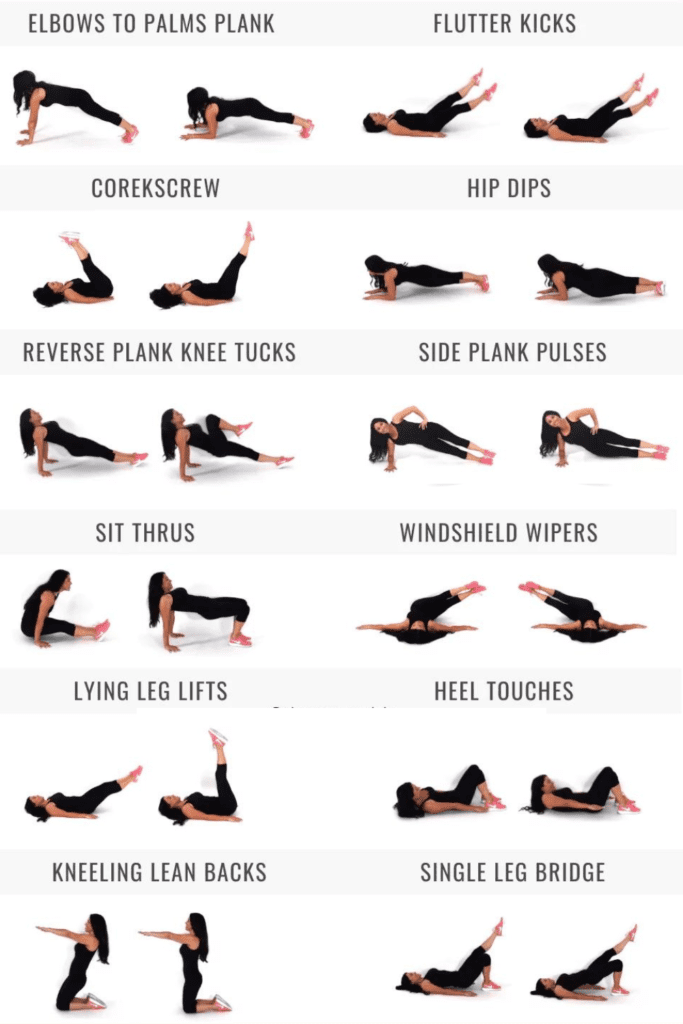
In conclusion, deep core stability is an essential aspect of overall fitness that often gets overlooked. By understanding its importance, dispelling common myths, assessing your current stability, and committing to effective training principles, you can achieve a stronger, more resilient core. The top deep core stability exercises we’ve discussed are just the beginning. Integrate these practices into your daily routine, and you’ll be well on your way to experiencing the profound benefits of a stable core.
Understanding The Topic
Deep core stability is a critical aspect of overall fitness that often doesn’t receive the attention it deserves. Unlike general core strength, which usually focuses on the superficial muscles like the rectus abdominis (commonly known as the “six-pack” muscles), deep core stability targets the deeper muscles that provide essential support and control to the spine and pelvis. Understanding the distinction between these two concepts is crucial for anyone looking to improve their fitness and health through effective deep core stability exercises.
The muscles involved in deep core stability are primarily the transverse abdominis, pelvic floor, diaphragm, and multifidus. These muscles work together to form a stable foundation for movement. The transverse abdominis is the deepest layer of abdominal muscles, wrapping around the torso like a corset. It acts as a stabilizer for the entire core, helping to maintain internal abdominal pressure and support the spine. The pelvic floor muscles form the base of the core and are essential for maintaining continence, supporting pelvic organs, and contributing to overall core stability. The diaphragm, which is the primary muscle involved in breathing, also plays a significant role in stabilizing the core by controlling intra-abdominal pressure during respiration. Lastly, the multifidus muscles run along the spine and are responsible for the fine-tuned movements and stability of each vertebra, providing segmental control and support.
The benefits of focusing on deep core stability are extensive and can positively impact various aspects of your physical health and performance. One of the most significant advantages is injury prevention. A stable core helps distribute the forces exerted on the body more efficiently, reducing the strain on the spine and other structures. This distribution of force is particularly important for protecting the lower back, which is often a common area of injury for many people. By strengthening the deep core muscles, you create a more resilient support system for the spine, thereby lowering the risk of injury during both everyday activities and more intense physical exertions.
Another crucial benefit of deep core stability is improved posture. Poor posture is a widespread issue, often resulting from prolonged sitting, incorrect lifting techniques, and general inactivity. When the deep core muscles are weak, it becomes challenging to maintain proper spinal alignment, leading to postural imbalances such as kyphosis (an excessive forward rounding of the upper back) or lordosis (an exaggerated inward curve of the lower back). Strengthening the deep core muscles can help correct these imbalances, promoting better posture. Improved posture not only enhances your physical appearance but also contributes to more efficient breathing and a reduction in musculoskeletal pain.
Enhanced athletic performance is another significant benefit of deep core stability. Athletes and active individuals rely heavily on a strong and stable core to perform at their best. Whether you’re a runner, golfer, weightlifter, or participate in any other sport, deep core stability is essential for optimizing performance and minimizing the risk of injury. A stable core allows for better control and efficiency in movement, improving balance, coordination, and overall functional strength. For example, runners benefit from a stable core by maintaining proper form and reducing the risk of lower back and hip injuries. Golfers need core stability to achieve powerful and accurate swings. Weightlifters require a stable core to support heavy lifts safely. By incorporating deep core stability exercises into your training routine, you can enhance your performance in any physical activity.
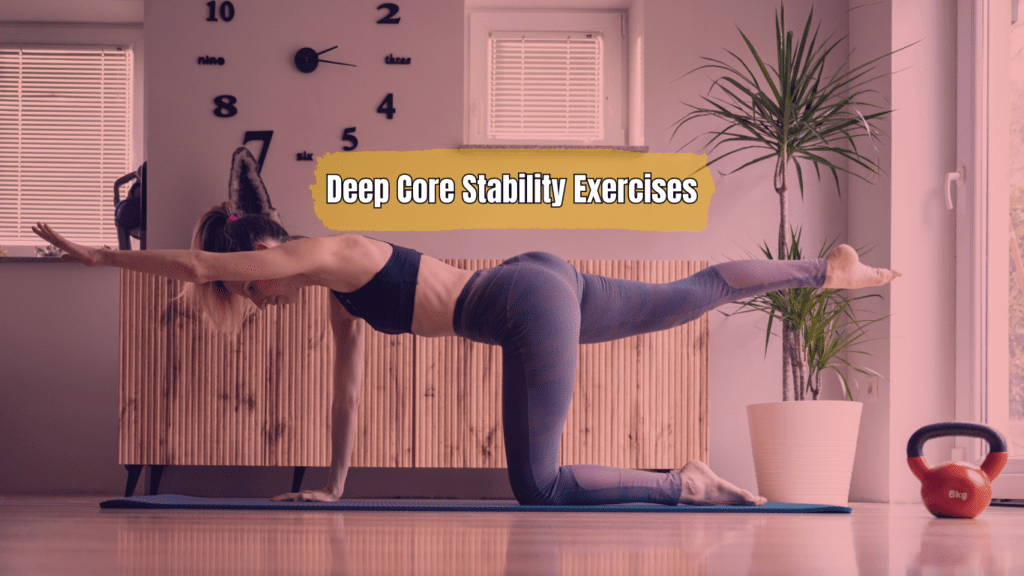
To achieve deep core stability, it’s essential to focus on exercises that target the transverse abdominis, pelvic floor, diaphragm, and multifidus muscles. Unlike general core exercises like crunches and sit-ups, which mainly work the superficial muscles, deep core stability exercises require specific movements and techniques to engage the deeper muscles effectively. For example, the plank is a highly effective exercise that engages multiple core muscles simultaneously, including the transverse abdominis and multifidus. The side plank targets the obliques and helps improve lateral stability. The bird-dog exercise enhances coordination and balance by working the core along with other muscle groups. The dead bug is another excellent exercise that emphasizes controlled movement and stability, engaging the transverse abdominis and pelvic floor muscles.
Incorporating deep core stability into your daily routine doesn’t have to be complicated. Simple changes, such as being mindful of your posture, engaging your core while sitting or standing, and performing short core exercises during breaks, can make a significant difference. Over time, these small adjustments add up, leading to a stronger, more stable core. For example, when sitting at your desk, try to sit up straight and engage your core muscles by pulling your navel towards your spine. When standing, distribute your weight evenly on both feet and maintain a slight bend in your knees to keep your core engaged. These small changes can help reinforce the stability of your core muscles throughout the day.
Success stories from individuals who have focused on deep core stability can be incredibly motivating. Many people report reduced back pain, improved athletic performance, and better overall well-being as a result of incorporating deep core stability exercises into their routines. Their experiences highlight the transformative power of focusing on the deeper muscles that provide essential support and stability to the body. By sharing these stories, we can inspire others to prioritize deep core stability in their fitness journeys.
Deep core stability is a fundamental aspect of overall fitness that offers numerous benefits, including injury prevention, improved posture, and enhanced athletic performance. By understanding the importance of the deeper core muscles and incorporating effective deep core stability exercises into your routine, you can achieve a stronger, more resilient core. These practices can be easily integrated into your daily life, leading to lasting improvements in your physical health and well-being. By prioritizing deep core stability, you set the foundation for a healthier, more active lifestyle.
Debunking Myths About Deep Core Stability Exercises
When it comes to building a strong core, there are numerous myths and misconceptions that can lead people astray. One of the most pervasive myths is the belief that sit-ups and crunches are the best ways to strengthen the core. While these exercises do engage certain muscles in the abdomen, they primarily target the superficial muscles, such as the rectus abdominis, and often neglect the deeper muscles that are crucial for true core stability. To truly understand how to build a stable core, it is essential to delve into the science behind deep core stability exercises and debunk these common myths.
One common misconception is that performing a high volume of sit-ups or crunches will result in a strong and stable core. However, these exercises often focus on repetitive flexion of the spine, which can place undue stress on the lower back and fail to engage the deeper core muscles effectively. The deep core muscles, such as the transverse abdominis, pelvic floor, diaphragm, and multifidus, play a vital role in stabilizing the spine and pelvis. Unlike the superficial muscles that are activated during sit-ups, these deeper muscles require specific and targeted exercises to strengthen.
Another myth is that a visible six-pack is an indicator of a strong core. While a toned, muscular abdomen can be aesthetically pleasing, it does not necessarily equate to deep core stability. The appearance of the abdominal muscles is more influenced by body fat percentage and genetic factors than by the strength and functionality of the core muscles. Deep core stability is about the ability of the core to provide support and control during movement, which is not always visible on the surface. Exercises that target the deep core muscles help to build a strong foundation that supports the entire body, beyond just achieving a certain look.
A prevalent misunderstanding is that you need to perform complex or high-intensity exercises to improve core stability. In reality, many effective deep core stability exercises are simple and can be performed with minimal equipment. For example, the plank is an excellent exercise that engages multiple core muscles simultaneously, including the transverse abdominis and multifidus. The side plank specifically targets the obliques and enhances lateral stability, while the bird-dog exercise improves coordination and balance by working the core along with other muscle groups. These exercises emphasize isometric holds and controlled movements, which are key for engaging the deeper core muscles effectively.
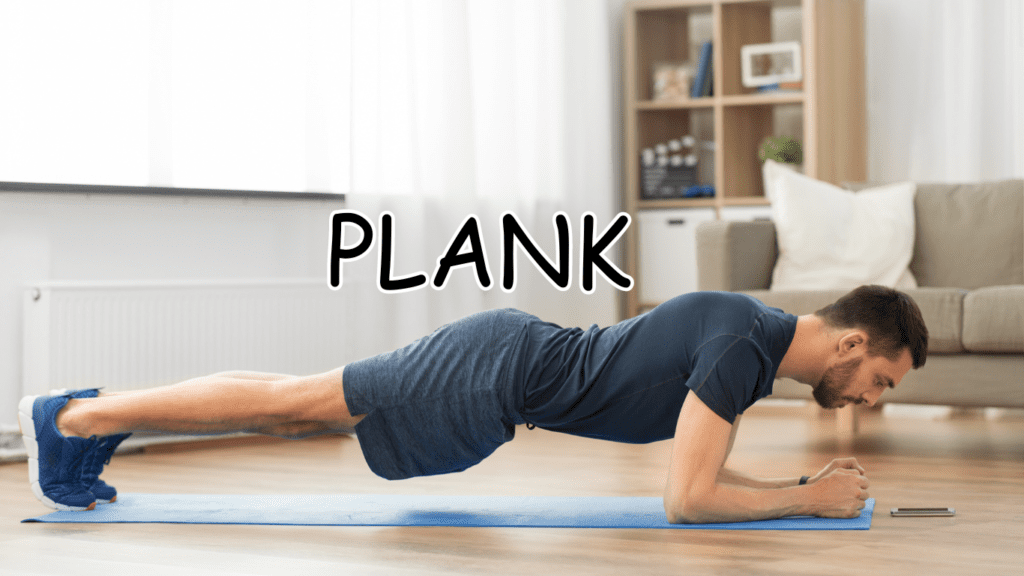
Some people believe that core exercises should only be done at the gym with specialized equipment. However, deep core stability exercises can be easily incorporated into your daily routine, regardless of your environment. Simple adjustments, such as being mindful of your posture, engaging your core while sitting or standing, and performing short core exercises during breaks, can make a significant difference. For instance, practicing deep diaphragmatic breathing helps activate the diaphragm and transverse abdominis, contributing to overall core stability. Integrating these practices into everyday activities ensures that the core muscles are consistently engaged and strengthened.
The misconception that core stability is only important for athletes is also widespread. While athletes do benefit significantly from a strong core, deep core stability is essential for everyone, regardless of fitness level or activity. A stable core supports everyday movements, such as bending, lifting, and twisting, and helps prevent injuries. For example, a strong core can alleviate lower back pain, a common issue that many people face due to weak core muscles. Additionally, improved posture from strong core muscles can enhance breathing efficiency and reduce the risk of musculoskeletal pain, benefiting overall health and quality of life.
Another myth is that core exercises need to be done every day to be effective. While consistency is important, overtraining the core can lead to fatigue and increase the risk of injury. It is crucial to allow time for muscle recovery and growth. Incorporating deep core stability exercises into your routine two to three times a week, combined with adequate rest, is sufficient for building a strong and stable core. This approach ensures that the muscles have time to recover and adapt, leading to more effective results over time.
Understanding the science behind deep core stability is crucial for debunking these myths and misconceptions. The core consists of several muscle groups that work together to provide stability and support for the spine and pelvis. The transverse abdominis acts as a natural corset, providing support and stability to the lower back. The pelvic floor muscles support the pelvic organs and help maintain continence, while the diaphragm assists in regulating intra-abdominal pressure. The multifidus muscles run along the spine and help control vertebral movement, ensuring segmental stability.
Effective deep core stability exercises engage these muscles through isometric holds, controlled movements, and proper breathing techniques. For example, the dead bug exercise emphasizes controlled movement and stability, engaging the transverse abdominis and pelvic floor muscles. The bridge exercise strengthens the glutes and lower back, supporting the multifidus muscles. These exercises focus on quality over quantity, ensuring that the deep core muscles are effectively engaged and strengthened.
It is important to dispel the myths and misconceptions surrounding core exercises and understand the importance of deep core stability. Sit-ups and crunches are not the most effective way to strengthen the core, and a visible six-pack does not necessarily indicate a strong and stable core. Deep core stability exercises target the deeper muscles that provide essential support and control, benefiting everyone, not just athletes. Simple, effective exercises can be incorporated into daily routines, and consistency combined with adequate rest is key for building a strong and stable core. By focusing on the science behind deep core stability, you can achieve a stronger, healthier, and more functional core.
How To Strengthen Deep Core Muscles With Deep Core Stability Exercises
Assessing Your Core Stability
Assessing your core stability is an essential step in understanding your current fitness level and identifying areas that need improvement. Before diving into deep core stability exercises, it’s beneficial to evaluate how well your core muscles are functioning. This can be done through simple tests that you can perform at home, which provide insight into your core strength and stability. Additionally, knowing when and why to seek professional evaluation from a physiotherapist or fitness expert can help ensure that you are on the right path to achieving a stable and strong core.
One of the most straightforward and effective ways to assess your core stability is the plank test. To perform this test, lie face down on the floor, then lift your body up on your elbows and toes, keeping your body in a straight line from head to heels. Engage your core muscles to hold this position. The goal is to maintain the plank position without sagging or arching your back. A good level of core stability is indicated if you can hold the plank for at least one minute with proper form. If you struggle to maintain the position or experience back pain, it may indicate that your core stability needs improvement.
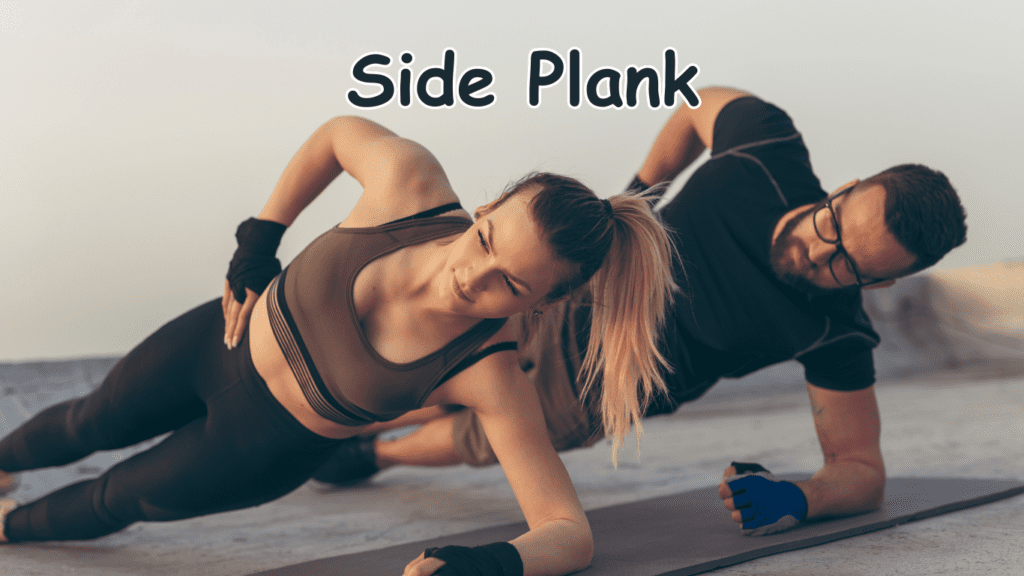
Another useful test is the side plank. This test helps assess the stability and strength of your oblique muscles, which are crucial for lateral stability. To perform the side plank, lie on your side with your legs extended, and lift your body onto your forearm and the side of your foot, forming a straight line from head to feet. Hold this position for as long as possible. A strong core is typically indicated by the ability to hold the side plank for at least 45 seconds on each side without losing form. Difficulty in maintaining the position may suggest weaknesses in the oblique muscles or overall core stability.
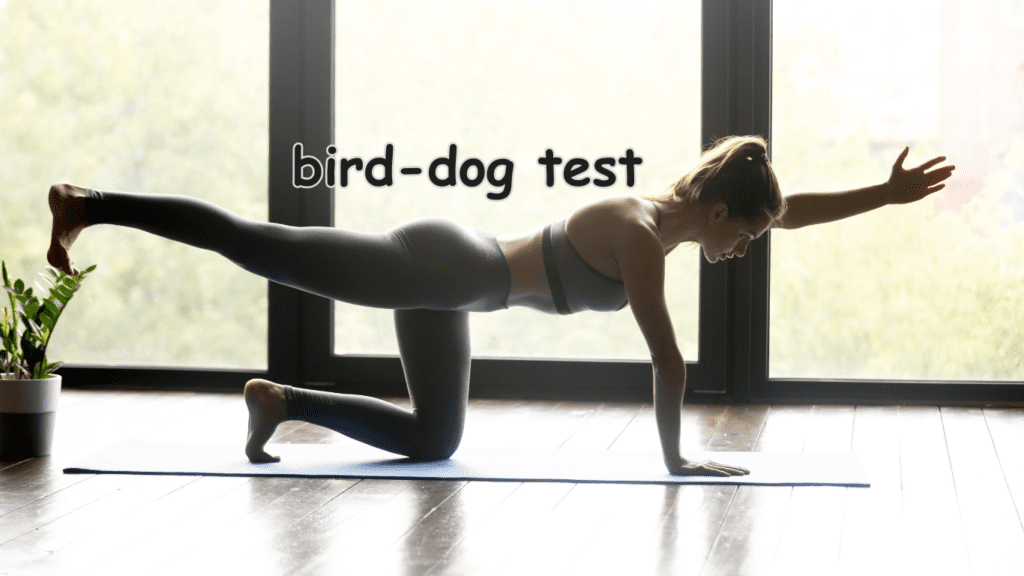
The bird-dog test is another effective way to evaluate your core stability. Start on your hands and knees, with your hands aligned under your shoulders and your knees under your hips. Extend your right arm forward and your left leg backward simultaneously, keeping your body balanced and stable. Hold this position for a few seconds, then return to the starting position and repeat with the opposite arm and leg. A well-balanced and controlled movement without wobbling or shifting indicates good core stability. Difficulty in maintaining balance or alignment suggests that your core stability needs enhancement.
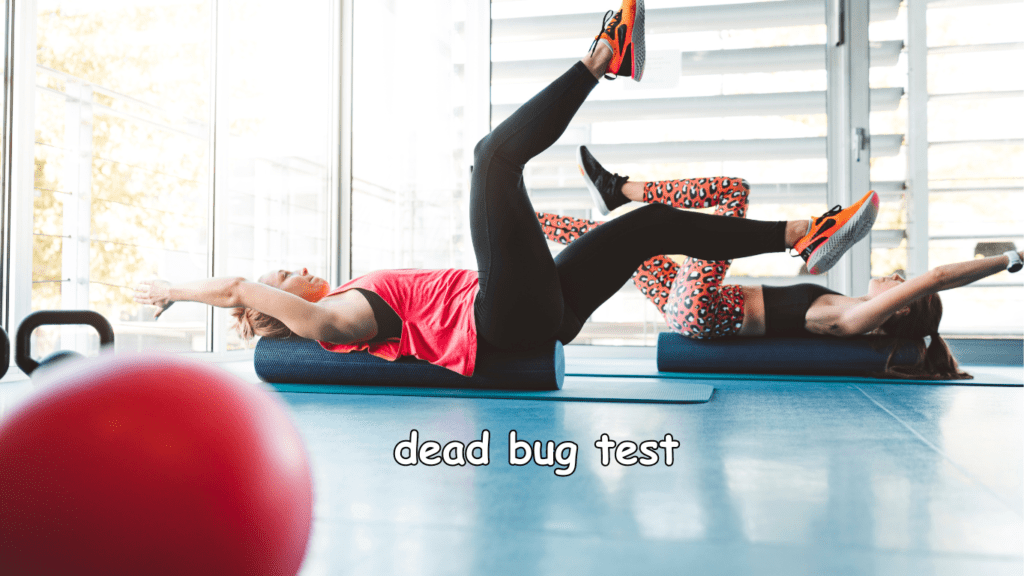
The dead bug test can also provide valuable insight into your core stability. Lie on your back with your arms extended towards the ceiling and your knees bent at a 90-degree angle. Slowly lower your right arm and left leg towards the floor while keeping your lower back pressed into the ground. Return to the starting position and repeat with the opposite arm and leg. Maintaining a stable core and avoiding any arching of the lower back during the movement indicates good core stability. Struggling to keep your lower back on the floor suggests a need for improvement in your deep core muscles.
While these tests can provide a good starting point for assessing your core stability, there are situations where seeking professional evaluation from a physiotherapist or fitness expert is highly beneficial. If you experience persistent back pain, hip pain, or other discomforts during these tests or daily activities, it is a clear sign that you should consult with a professional. A physiotherapist or fitness expert can conduct a more comprehensive assessment and identify specific weaknesses or imbalances in your core muscles. They can also provide personalized recommendations and exercises tailored to your needs, ensuring that you address any issues effectively and safely.
Professional evaluation is also recommended if you are an athlete or engage in high-intensity sports and activities. Athletes often place significant demands on their core muscles, and even minor weaknesses or imbalances can impact performance and increase the risk of injury. A fitness expert can help you develop a targeted training program that enhances your core stability, improves your athletic performance, and reduces the likelihood of injuries. This is particularly important for sports that involve repetitive movements, sudden changes in direction, or heavy lifting.
In addition, if you are recovering from an injury or surgery, seeking professional guidance is crucial. Rehabilitation often requires a gradual and carefully monitored approach to rebuilding core stability. A physiotherapist can design a rehabilitation program that safely progresses from basic stability exercises to more advanced movements, ensuring that you regain full function and strength without compromising your recovery. They can also monitor your progress and make adjustments to your program as needed, providing ongoing support throughout your rehabilitation journey.
For those who are new to exercise or have specific health conditions, consulting with a fitness expert before starting deep core stability exercises is a wise decision. A professional can help you understand your current fitness level, set realistic goals, and develop a safe and effective exercise plan. They can also teach you proper form and technique, which is essential for preventing injuries and maximizing the benefits of your core stability training.
Deep Core Stability Exercises Chart
| Exercise | Description | Primary Benefits | Target Muscles |
|---|---|---|---|
| Plank | Hold a straight body position on forearms and toes | Improves overall core strength and endurance | Transverse abdominis, multifidus, diaphragm |
| Side Plank | Hold a straight body position on one forearm and the side of the foot | Enhances lateral stability and targets obliques | Obliques, transverse abdominis |
| Bird-Dog | Extend opposite arm and leg while maintaining balance on hands and knees | Improves coordination, balance, and core stability | Multifidus, transverse abdominis, glutes |
| Dead Bug | Lower opposite arm and leg while lying on your back, keeping lower back on the floor | Emphasizes controlled movement and core stability | Transverse abdominis, pelvic floor |
| Bridge | Lift hips off the ground while lying on your back with knees bent | Strengthens glutes and lower back, supports core stability | Glutes, multifidus, transverse abdominis |
| Drawing-In Maneuver | Gently draw the navel towards the spine while lying on the back | Enhances awareness and engagement of deep core muscles | Transverse abdominis, pelvic floor |
Assessing your core stability is a vital step in improving your overall fitness and health. Simple tests like the plank, side plank, bird-dog, and dead bug can provide valuable insights into your current level of core stability. These tests help identify areas that need improvement and guide you in your training efforts. However, if you experience pain, are an athlete, are recovering from an injury, or are new to exercise, seeking professional evaluation from a physiotherapist or fitness expert is highly recommended. Professional guidance ensures that you address any issues effectively and safely, helping you achieve a stronger, more stable core through targeted deep core stability exercises. By taking these steps, you can enhance your core stability, improve your posture, prevent injuries, and optimize your overall physical performance.
Key Principles of Effective Training
Understanding the key principles of effective deep core stability training is essential for anyone looking to strengthen their core and improve overall physical health. By focusing on these principles, you can ensure that your training is both safe and effective. One of the most fundamental aspects of deep core stability exercises is the role of proper breathing. Proper breathing is crucial because it helps engage the core muscles correctly and maintain stability throughout the exercises.
Breathing plays a significant role in core stability exercises as it directly involves the diaphragm, one of the key muscles in the core. When you inhale deeply, your diaphragm contracts and moves downward, increasing the space in your chest cavity and allowing your lungs to expand. This movement helps stabilize the trunk and supports the engagement of other deep core muscles such as the transverse abdominis and pelvic floor. Proper breathing ensures that these muscles are activated and working together to provide the necessary support for your spine and pelvis.
To incorporate proper breathing into your deep core stability exercises, start by practicing diaphragmatic breathing. Lie on your back with your knees bent and place one hand on your chest and the other on your abdomen. Take a deep breath in through your nose, allowing your abdomen to rise while keeping your chest still. Exhale slowly through your mouth, feeling your abdomen fall. This practice helps you engage your diaphragm effectively and can be integrated into various core exercises to enhance their effectiveness.
Engaging the deep core muscles correctly is another critical principle of effective deep core stability training. The deep core muscles, including the transverse abdominis, pelvic floor, and multifidus, need to be engaged properly to provide optimal support and stability. To engage these muscles, imagine drawing your navel towards your spine without holding your breath or tightening the superficial muscles excessively. This action should be gentle and controlled, maintaining a steady contraction throughout the exercise.
One effective way to practice engaging your deep core muscles is through the drawing-in maneuver. To perform this, lie on your back with your knees bent and feet flat on the floor. Place your fingertips just inside your hip bones and take a deep breath in. As you exhale, gently draw your navel towards your spine, feeling the muscles under your fingertips contract. Hold this contraction for a few seconds while continuing to breathe normally. This exercise helps you become more aware of your deep core muscles and how to engage them during other core stability exercises.
The importance of progressing gradually in your deep core stability training cannot be overstated. Starting with exercises that match your current fitness level and gradually increasing the intensity and complexity of the exercises is essential for building strength and preventing injury. When beginning deep core stability exercises, focus on mastering basic movements and maintaining proper form before advancing to more challenging exercises.
For example, start with simple exercises such as the plank and bridge, which are effective for engaging the deep core muscles while providing a stable base of support. Once you can perform these exercises with proper form and without discomfort, progress to more dynamic exercises like the bird-dog or dead bug, which require greater coordination and control. Gradual progression allows your muscles to adapt and strengthen over time, reducing the risk of strain or injury.
Avoiding overtraining is equally important in maintaining a balanced and effective core stability routine. Overtraining can lead to muscle fatigue, increased risk of injury, and diminished results. To prevent overtraining, ensure that you incorporate adequate rest and recovery into your training schedule. This means not only taking rest days but also listening to your body and avoiding pushing through pain or excessive fatigue.
A well-rounded training program should include a variety of exercises that target different aspects of core stability, such as isometric holds, dynamic movements, and functional exercises that mimic daily activities. This variety helps prevent overuse of specific muscle groups and promotes overall balance and stability.
In addition to proper breathing, engaging the deep core muscles, gradual progression, and avoiding overtraining, it is essential to maintain consistency in your training routine. Consistency ensures that you continue to build strength and improve stability over time. Aim to incorporate deep core stability exercises into your routine at least two to three times a week, gradually increasing the frequency as your strength and endurance improve.
It is also beneficial to incorporate mind-body awareness into your training. Being mindful of your movements, posture, and muscle engagement during exercises helps enhance the effectiveness of your workouts and reduces the risk of injury. Practicing mindfulness can also help you identify any imbalances or weaknesses in your core, allowing you to address them more effectively.
Furthermore, functional training that incorporates deep core stability exercises into everyday movements can significantly enhance your overall stability and strength. For example, practicing balance exercises such as standing on one leg while engaging your core or performing functional movements like lifting and carrying objects with proper core engagement can help reinforce the stability and strength gained through targeted core exercises.
Incorporating mobility and flexibility exercises into your routine is also crucial for maintaining a healthy and stable core. Stretching and mobility exercises help ensure that your muscles and joints remain flexible and functional, which is essential for performing core stability exercises correctly and effectively. For example, incorporating stretches for the hip flexors, hamstrings, and lower back can help improve your range of motion and support proper core engagement.
Effective deep core stability training involves several key principles that must be adhered to for optimal results. Proper breathing is essential for engaging the diaphragm and supporting the deep core muscles. Learning to engage the deep core muscles correctly ensures that you are targeting the right muscles for stability and support. Gradual progression in your exercises allows your muscles to adapt and strengthen safely, while avoiding overtraining prevents fatigue and injury. Maintaining consistency, practicing mind-body awareness, incorporating functional training, and including mobility and flexibility exercises are all crucial components of a well-rounded core stability routine. By adhering to these principles, you can effectively strengthen your core, improve stability, and enhance your overall physical health through targeted deep core stability exercises.
Top Deep Core Stability Exercises
When it comes to building a strong and stable core, incorporating a variety of effective exercises is key. In this part, we will delve into some of the top deep core stability exercises that you can integrate into your fitness routine. These exercises are designed to target the deep core muscles, including the transverse abdominis, pelvic floor, diaphragm, and multifidus. Here are detailed instructions for each of these exercises to help you perform them correctly and safely.
Dead Bug: The dead bug is an excellent exercise for engaging the deep core muscles while promoting coordination and stability. To perform the dead bug, lie on your back with your arms extended towards the ceiling and your knees bent at a 90-degree angle. Ensure your lower back is pressed firmly into the floor. Slowly lower your right arm and left leg towards the floor while keeping your core engaged and your back flat. Pause briefly, then return to the starting position and repeat with the opposite arm and leg. Continue alternating sides for the desired number of repetitions. Focus on controlled movements and maintaining a stable core throughout the exercise.
Bird Dog: The bird dog is another effective exercise that targets the deep core muscles along with the lower back and glutes. Begin on your hands and knees, with your hands aligned under your shoulders and your knees under your hips. Engage your core by drawing your navel towards your spine. Slowly extend your right arm forward and your left leg backward, forming a straight line from your fingertips to your toes. Hold this position for a few seconds, ensuring your hips remain level and your core is engaged. Return to the starting position and repeat with the opposite arm and leg. Perform the exercise for the desired number of repetitions, focusing on balance and stability.
Plank Variations: Plank exercises are highly effective for building deep core stability. Here are a few variations:

Forearm Plank: Start by lying face down on the floor. Lift your body onto your forearms and toes, keeping your body in a straight line from head to heels. Engage your core and hold this position for as long as possible without allowing your hips to sag or rise. Aim to maintain a strong, stable position throughout the exercise.
Side Plank: Lie on your side with your legs extended. Lift your body onto your forearm and the side of your foot, forming a straight line from head to feet. Engage your core and hold this position, ensuring your hips remain elevated and your body stays in alignment. Repeat on the opposite side.
Pelvic Tilts: Pelvic tilts are a simple yet effective exercise for engaging the deep core muscles and improving pelvic stability. Lie on your back with your knees bent and feet flat on the floor. Place your hands on your lower abdomen. Gently tilt your pelvis backward, pressing your lower back into the floor, then tilt it forward, creating a small arch in your lower back. Continue this rocking motion, focusing on engaging your core muscles with each movement. Perform the exercise slowly and with control, ensuring you feel the engagement in your deep core muscles.
Hollow Body Hold: The hollow body hold is a challenging exercise that targets the entire core, including the deep core muscles. Begin by lying on your back with your arms extended overhead and your legs straight. Lift your head, shoulders, arms, and legs off the floor, creating a hollow shape with your body. Engage your core by drawing your navel towards your spine and maintain this position, ensuring your lower back stays in contact with the floor. Hold the position for as long as possible, focusing on maintaining a strong core and stable position.
Incorporating these deep core stability exercises into your fitness routine can significantly enhance your core strength and stability. Each exercise targets the deep core muscles effectively, promoting better posture, injury prevention, and improved overall performance. Remember to perform these exercises with proper form and control to maximize their benefits and reduce the risk of injury.
Consistency is key when it comes to deep core stability training. Aim to include these exercises in your routine at least two to three times a week. As you become more comfortable with the movements and your strength improves, you can gradually increase the intensity and duration of the exercises. This gradual progression helps ensure that your muscles continue to adapt and strengthen over time.
Additionally, integrating proper breathing techniques into your exercises can further enhance their effectiveness. Focus on diaphragmatic breathing, where you inhale deeply through your nose, allowing your abdomen to rise, and exhale slowly through your mouth, feeling your abdomen fall. This type of breathing helps engage the diaphragm and other deep core muscles, providing better stability and support during the exercises.
It’s also important to listen to your body and avoid overtraining. While it’s beneficial to challenge your muscles, pushing too hard without adequate rest can lead to fatigue and increase the risk of injury. Ensure that you allow for rest and recovery days in your training schedule. If you experience any pain or discomfort during these exercises, consider seeking guidance from a physiotherapist or fitness expert to ensure you are performing the movements correctly and safely.
Enhanced Chart for Top Deep Core Stability Exercises
| Exercise | Calories Burned Per Minute | Primary Muscles Targeted | Level of Difficulty | Recommended Duration per Session |
|---|---|---|---|---|
| Dead Bug | 3-5 | Transverse abdominis, rectus abdominis, obliques | Beginner | 2-3 sets of 10-12 reps |
| Bird Dog | 3-5 | Multifidus, erector spinae, glutes, shoulders | Beginner | 2-3 sets of 10-12 reps |
| Forearm Plank | 4-6 | Transverse abdominis, rectus abdominis, glutes, shoulders | Intermediate | 3 sets of 30-60 seconds |
| Side Plank | 4-6 | Obliques, transverse abdominis, glutes, shoulders | Intermediate | 3 sets of 20-40 seconds per side |
| Pelvic Tilts | 2-4 | Pelvic floor, transverse abdominis, rectus abdominis | Beginner | 2-3 sets of 10-15 reps |
| Hollow Body Hold | 5-7 | Transverse abdominis, rectus abdominis, hip flexors | Advanced | 3 sets of 20-40 seconds |
How to Use This Chart
- Primary Muscles Targeted: This column helps you understand which muscles are being worked with each exercise, allowing you to focus on specific areas of the core.
- Level of Difficulty: Knowing the difficulty level helps you choose exercises that match your current fitness level and progressively challenge yourself as you improve.
- Recommended Duration per Session: This column provides a guideline for how long or how many reps to perform each exercise, ensuring you get an effective workout without overtraining.
Example Workout Routine
Beginner Routine (20 minutes)
- Pelvic Tilts: 2 sets of 10 reps
- Dead Bug: 2 sets of 10 reps per side
- Bird Dog: 2 sets of 10 reps per side
- Forearm Plank: 3 sets of 20 seconds
- Side Plank: 2 sets of 15 seconds per side
Intermediate Routine (25 minutes)
- Dead Bug: 3 sets of 10 reps per side
- Bird Dog: 3 sets of 12 reps per side
- Forearm Plank: 3 sets of 45 seconds
- Side Plank: 3 sets of 30 seconds per side
- Hollow Body Hold: 2 sets of 20 seconds
Advanced Routine (30 minutes)
- Forearm Plank: 3 sets of 60 seconds
- Side Plank: 3 sets of 40 seconds per side
- Dead Bug: 3 sets of 12 reps per side
- Bird Dog: 3 sets of 15 reps per side
- Hollow Body Hold: 3 sets of 40 seconds
By incorporating these top deep core stability exercises into your fitness routine and following the key principles of effective training, you can achieve a stronger, more stable core. This not only improves your physical performance but also enhances your overall health and well-being. Remember that building core stability is a gradual process that requires consistency, proper technique, and mindful practice. With dedication and the right approach, you can enjoy the numerous benefits of a strong and stable core.
Integrating Core Stability into Daily Life
Integrating deep core stability exercises into your daily life can significantly enhance your overall strength, posture, and functional movement. The good news is that you don’t need to set aside large chunks of time to reap the benefits of core stability training. By incorporating these exercises into everyday routines, you can improve your core strength and stability without disrupting your schedule. Here are some practical ways to incorporate core stability exercises into your daily life, along with sample workout routines that range from quick 5-minute sessions to more comprehensive 30-minute workouts.
One effective way to integrate core stability into your daily routine is to engage your core muscles while sitting at your desk. Sitting for long periods can weaken your core and lead to poor posture. To counter this, practice seated pelvic tilts. Sit upright in your chair with your feet flat on the floor and your hands on your thighs. Gently tilt your pelvis forward, arching your lower back slightly, and then tilt it backward, flattening your lower back against the chair. This movement helps engage your deep core muscles and can be done discreetly throughout the day.
Another easy way to incorporate core stability exercises is during household chores. Activities such as vacuuming, mopping, or carrying groceries can be turned into opportunities for core engagement. For example, while vacuuming, focus on maintaining a neutral spine and engage your core by drawing your navel towards your spine. Similarly, when lifting groceries, bend your knees, keep your back straight, and engage your core to support the movement. These small adjustments can make a significant difference in strengthening your core muscles over time.
For those looking for structured routines, here are some sample workout plans that include deep core stability exercises. These routines can be adapted to fit your schedule and fitness level.
Quick 5-Minute Routine:
- Seated Pelvic Tilts: Sit upright and perform 10 pelvic tilts, focusing on engaging your deep core muscles.
- Standing Marches: Stand with your feet hip-width apart and lift one knee to hip level while engaging your core. Alternate legs for 1 minute.
- Wall Plank: Stand facing a wall, place your forearms against it, and walk your feet back until your body forms a straight line. Hold for 30 seconds while keeping your core engaged.
- Bird Dog: Get on your hands and knees, extend your right arm and left leg, hold for a few seconds, and switch sides. Repeat for 1 minute.
- Seated Knee Lifts: Sit on the edge of your chair, lift one knee towards your chest, hold for a second, and lower it back down. Alternate legs for 1 minute.
10-Minute Routine:
- Seated Pelvic Tilts: Perform 10 pelvic tilts to warm up your core.
- Standing Side Bends: Stand with your feet shoulder-width apart, place your hands on your hips, and bend sideways at the waist. Alternate sides for 1 minute.
- Forearm Plank: Get into a forearm plank position and hold for 1 minute.
- Dead Bug: Lie on your back, extend your arms towards the ceiling, and bend your knees at a 90-degree angle. Slowly lower your right arm and left leg, hold for a second, and return to the starting position. Alternate sides for 2 minutes.
- Hollow Body Hold: Lie on your back, lift your head, shoulders, and legs off the floor, and hold for 30 seconds.
- Bird Dog: Perform the bird dog exercise for 2 minutes, focusing on controlled movements.
- Standing Marches: Finish with 1 minute of standing marches.
30-Minute Comprehensive Routine:
- Warm-Up: Start with 5 minutes of light cardio, such as walking or jogging in place, to get your blood flowing and muscles warmed up.
- Seated Pelvic Tilts: Perform 10 pelvic tilts to engage your core.
- Forearm Plank: Hold a forearm plank for 1 minute, focusing on maintaining a straight line from head to heels.
- Side Plank: Lie on your side and lift your body onto your forearm and the side of your foot. Hold for 30 seconds on each side.
- Dead Bug: Perform the dead bug exercise for 3 minutes, ensuring controlled movements and core engagement.
- Bird Dog: Perform the bird dog exercise for 3 minutes, alternating sides.
- Hollow Body Hold: Hold the hollow body position for 1 minute.
- Standing Side Bends: Stand with your feet shoulder-width apart and bend sideways at the waist, alternating sides for 2 minutes.
- Wall Sit: Stand with your back against a wall and slide down into a seated position, as if sitting in an invisible chair. Hold for 1 minute, engaging your core.
- Standing Marches: March in place for 2 minutes, lifting your knees to hip level and engaging your core with each lift.
- Cool Down and Stretch: Spend the last 5 minutes stretching your core, hips, and lower back. Focus on slow, deep stretches to help your muscles relax and recover.
Integrating deep core stability exercises into your daily routine doesn’t have to be time-consuming or complicated. By incorporating these exercises into everyday activities and following structured routines, you can improve your core strength and stability effectively. Whether you’re sitting at your desk, doing household chores, or dedicating specific times for workouts, engaging your core regularly will lead to significant benefits in posture, injury prevention, and overall functional movement.
Remember, consistency is key. The more you practice these exercises, the more natural they will become, and the stronger your core will get. It’s important to listen to your body and progress gradually, ensuring that you maintain proper form and avoid overtraining. With dedication and the right approach, integrating deep core stability exercises into your daily life can help you achieve a strong, stable core and enhance your overall physical well-being.
Success Stories and Final Words
Let’s wrap up our comprehensive exploration of deep core stability exercises by sharing some inspirational success stories from individuals who have benefited from incorporating these exercises into their daily routines. These stories will not only highlight the effectiveness of these exercises but also motivate you to start your own journey towards a stronger, more stable core. We’ll also summarize the key points discussed throughout this article and encourage you to take the first step in integrating deep core stability exercises into your fitness regimen.
Meet Jane, a 35-year-old office worker who struggled with chronic lower back pain due to prolonged hours of sitting. Jane decided to take action after learning about the importance of deep core stability exercises. She started with simple exercises like seated pelvic tilts and gradually incorporated more challenging ones like the plank variations and bird dog. Over time, Jane noticed a significant reduction in her back pain. Her posture improved, and she felt more energetic throughout the day. Jane credits her consistent practice of deep core stability exercises for transforming her overall well-being and allowing her to enjoy an active lifestyle without the constant worry of back pain.
Next, let’s talk about Tom, a 42-year-old father of two and an amateur runner. Tom experienced frequent injuries and muscle strains, which hindered his running performance and recovery. After consulting with a physiotherapist, he discovered that his core strength was lacking, particularly in the deep core muscles. Tom incorporated exercises like the dead bug, hollow body hold, and side plank into his training routine. Within a few months, he noticed a remarkable difference. His running form improved, he experienced fewer injuries, and his recovery time shortened. Tom’s commitment to deep core stability exercises not only enhanced his running performance but also enabled him to keep up with his kids without any discomfort.
Lastly, meet Linda, a 28-year-old yoga enthusiast who wanted to deepen her practice and improve her balance. Despite being flexible, Linda realized that her core stability needed work. She added deep core stability exercises such as the bird dog and pelvic tilts to her routine. As she progressed, she introduced more challenging moves like the forearm plank and hollow body hold. Linda’s dedication paid off as she began to notice better control and stability in her yoga poses. Her overall strength and balance improved, allowing her to achieve more advanced poses with confidence. Linda’s story is a testament to how deep core stability exercises can complement and enhance other physical activities.
Throughout this article, we have covered several essential aspects of deep core stability exercises. Let’s briefly summarize the key points discussed in each part:
- Introduction to Deep Core Stability: We began by explaining the significance of deep core stability and how it differs from general core strength. Understanding the muscles involved, such as the transverse abdominis, pelvic floor, diaphragm, and multifidus, is crucial for effective training.
- Benefits of Deep Core Stability: We discussed the numerous benefits of deep core stability, including injury prevention, improved posture, enhanced athletic performance, and better functional movement.
- Common Myths and Misconceptions: We addressed common myths about core exercises, such as the misconception that sit-ups are the best way to strengthen the core. We provided accurate information to replace these myths, explaining the science behind deep core stability.
- Assessing Your Core Stability: We offered simple tests readers can perform to assess their current level of core stability and suggested when to seek professional evaluation from a physiotherapist or fitness expert.
- Key Principles of Effective Deep Core Stability Training: We highlighted the importance of proper breathing, engaging the deep core muscles correctly, and progressing gradually while avoiding overtraining.
- Top Deep Core Stability Exercises: We provided detailed instructions for a variety of exercises, including the dead bug, bird dog, plank variations, pelvic tilts, and hollow body hold, emphasizing the importance of consistency and proper form.
- Integrating Core Stability into Daily Life: We suggested practical ways to incorporate core stability exercises into everyday routines, such as while sitting at a desk or during household chores. We also provided sample workout routines ranging from quick 5-minute sessions to comprehensive 30-minute workouts.
In conclusion, integrating deep core stability exercises into your fitness regimen can bring about profound benefits, from improved posture and reduced pain to enhanced athletic performance and better overall functional movement. The success stories of Jane, Tom, and Linda demonstrate the transformative power of these exercises when practiced consistently and correctly.
Now it’s your turn to take action. Start by incorporating some of the exercises we’ve discussed into your daily routine. Whether you have just a few minutes or a half-hour to spare, there’s always an opportunity to engage your core and work towards a stronger, more stable you. Remember, consistency is key, and gradual progression will help you achieve the best results. Embrace the journey towards improved core stability and enjoy the positive impact it will have on your health and well-being.


